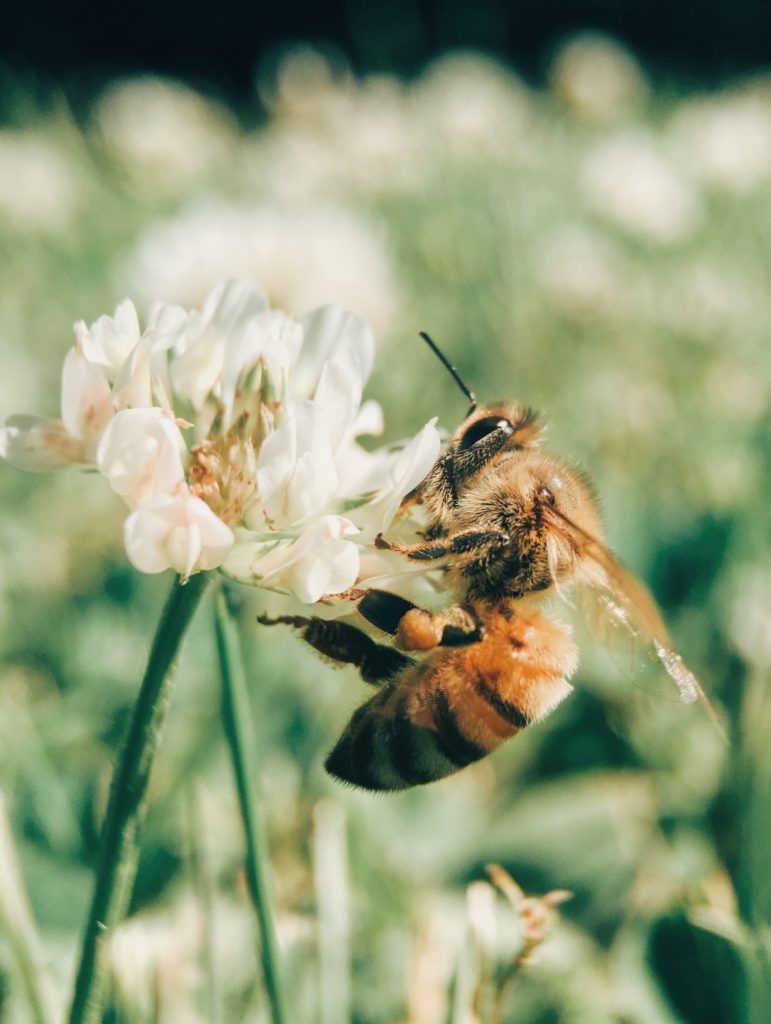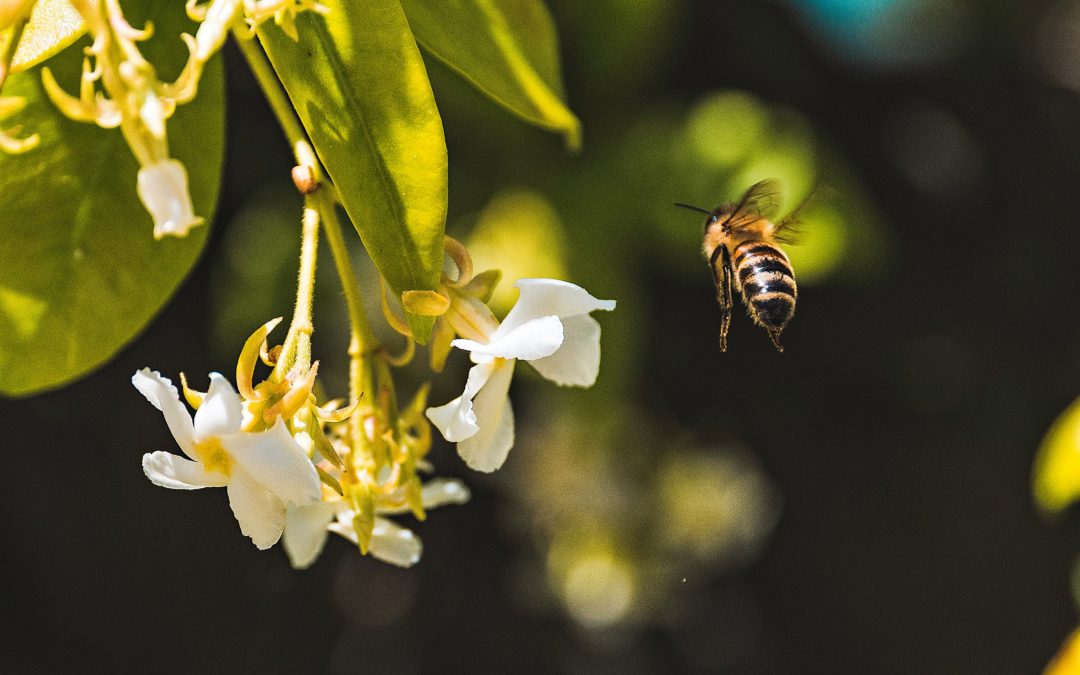People hear a lot about the decline of bees, about the lack of pollinators, but what are pollinators? more importantly, what do they do for us and what do we do for them?
The group of pollinators is very wide, not only honey bees, which belong to one specific family. In fact, in Spain we have more than 1,000 species of bees from six different families, 75% of bees are solitary and live on the ground and with more than 20,000 species of bees in the world they have evolved and are organised in many different ways.

Other pollinators are birds, mammals and reptiles because plants are very clever – they have been on earth for many millions of years longer than we have! And that results in greater evolution and adaptation. Plants have developed sophisticated methods of attraction to achieve their reproductive purposes because the pollen has to reach its destination! They use everything from lizards to flies and bats, not forgetting air and water, which also help in pollination.
But if there are so many means for pollination, why are pollinators, in particular bees, so important? Well, at least, in this case, size and shape matter! There are all kinds of insects, small, fat, long, with very long tongues, in short, many sizes! Just as there are many shapes and sizes of flowers and pollen grains because plants are very sybaritic.
Plants have evolved in such a way that each one has developed its own system, some of them very exclusive, to avoid pollen from other plants, that is why there are so many smells, to make a first selection of “be my guests!”; and many sizes, some bees have to stick out their proboscis or “tongue” up to 20mm to get to the food; some, like the passionflower, have very large stamen and pistils, and can only be pollinated by large bumblebees; others are complicated, like the snapdragon flower, where the bee has to get inside as if it were a cave; and others are smaller, like daisies, which need a small insect and are therefore pollinated, for example, by small black and yellow striped flies, which are the hoverflies. The sunflower is a large daisy and therefore needs a larger pollinator such as the honey bee. There are thousands of families of bees of different sizes, ranging from 4-5 mm to 30-35 mm (honey bees measure between 15 and 20 mm).
Both flowers, sunflower and daisy, have large yellow or white “petals” around them (which are actually ligule) and a bunch of little yellow flowers in the centre from which the seeds come out (which in sunflowers we call pipas). Next time you pass by a park, pick up a daisy and look closely at the yellow part, they are all little flowers! With their stamens, stigmas and all the parts of a flower that we hardly remember from when we studied them at school!

Colours are another attraction mechanism for pollinators to detect them from far away! With our eyesight, all colours look the same to us, but with their special vision, they see the colours of the flowers differently. In the end, plants have made insects and pollinators evolve as pollen carriers, and in return, they provide delicacies in the form of fruit, seeds, pollen, nectar, etc. As you can see, there are numerous mechanisms to attract the right pollinator, so if the population of one disappears in a short period of time, the plant cannot adapt and even less reproduce.

Many pollinators obtain food rewards from plants, but they do not feed exclusively on them like reptiles or birds, but bees do, they depend exclusively on plants for food. Both their larvae and the adult insect feed on floral products such as nectar and pollen. And as we have seen, not all flowers feed all pollinators.
So how can we help pollinators?
We can build them a shelter, depending on the family of bees they have different forms of housing or social grouping. Some build galleries in the ground where they live, so placing a pot in the window is enough; others in holes in logs or pieces of wood, even shells!. So a simple and space-saving way is to put up a hotel for solitary bees. It is very simple, consisting of a bundle of cut bamboo canes or a piece of wood with holes of different diameters between 5-25 mm, with a base, that is, that does not go through the wood and without cracks, as these are possible entrances for parasites and predators. There the bees will lay their eggs, which they will leave with the nectar or pollen collected and cover it up, and after a year the new bees will leave and go and look for another hole. So there is no danger of being stung. Bees don’t live there, they just lay their eggs, they are solitary, they don’t form hives, they don’t form communities, they sleep on flowers and branches.
Solitary bees don’t sting! Well yes, but not like honey bees, I mean, many bees die when they sting you, solitary bees do not form communities, as they do not have to defend it, they are not aggressive, they do not attack, they do not sting, this makes it a good idea to install this type of shelters in schools, children can get close and see how many holes are plugged, and count the bees they have helped.
Also, these bees only collect food for their own food and larvae, so they don’t need to collect so much, others need food to raise all their offspring, and others need food for the whole colony and humans, so if you disturb them with your hand, most of them leave, they don’t want trouble, attacking you costs them their lives, but others are more insistent because they need a lot of food and the closer you are to the hive, like the honey bees, the more aggressive they can become and attack.

This is why there are special regulations for keeping beehives, which are considered a type of livestock farming (beekeeping or honey farming) and have to comply with requirements regarding distances to populations, etc. It even has to respect the distance between them, since, if there is little food, it attacks other pollinators, such as solitary bees, as they are competing for food.
It is also important to have flowers all year round, for them and for us, there are many native plants with different flowering periods so that they have food all year round, in different sizes for bees of all sizes.
How do they help us? The best-known part of the work of pollinators is that of pollination. 80% of plants depend on them, and many of them are responsible for providing us with food. 75% of crops currently need pollination, and this includes the crops needed to feed livestock, so the production of livestock by-products also depends on them.

Pollinators are therefore our allies, and it is thanks to them that a large part of natural and urban plant communities and our food is maintained. Climate change, pesticides, agricultural intensification, the continuous clearing and mowing of parks and fields, including the proliferation of beehives, are causing their population to decline rapidly. Moreover, we still have a lot to learn about them, so it is very necessary to help them consciously and rationally, and not only at the level of experts, but also at the social level, all of us can help their conservation, taking care of pollinators and cultivating more flowers around us, since without flowers there are no pollinators and vice versa.
Bibliography
If you want to know more you can consult the websites of great professionals such as www.lepidopteros.com and www.abejassilvestres.es
Bibliography: Curro Molina & Ignasi Bartomeus. 2019. Guía de campo de las abejas de España. Esditorial Tundra, Castellón. 250pp. 19’5 x 12’5 cm. ISBN 978-84-16702-77-0.
http://arba-va.blogspot.com/2019/06/la-importancia-de-las-abejas-solitarias.html
Photos: óscar Aguado and María González.
- Biogenic gas. What do you mean? - 12 April 2024
- Our wonderful guardians and neighbours! - 18 February 2022
